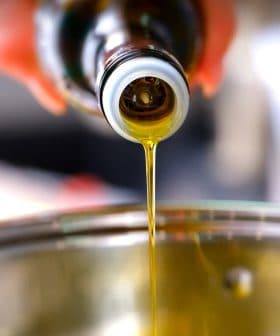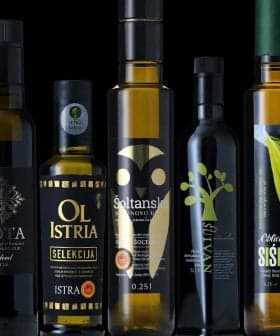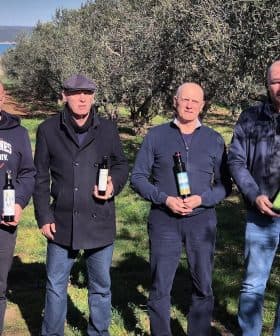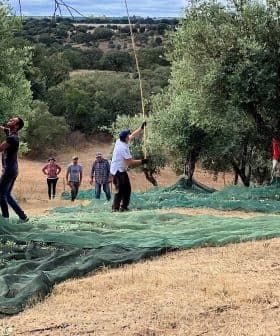Chemistry Takes Center Stage at Olive Center Course
Olive oil chemistry plays a crucial role in assessing and controlling the quality of extra virgin olive oil, with a focus on scientific analysis and education. Natalia Ruiz emphasizes the importance of understanding key terms such as oleic acid, free-fatty acid, peroxide value, and polyphenol count to maximize flavor, health benefits, and overall quality of olive oil.
Olive oil chemistry can unlock fruit assessment for optimal yield. The science behind different analyses provides producers, hobbyists and consumers with specific options to control or evaluate the quality of any extra virgin olive oil.
A scientific approach can be beneficial, whether running an olive mill or selecting a high-quality, flavorful extra virgin olive oil for a supermarket shelf.
Natalia Ruiz, an oil chemist and laboratory manager at Modern Olives Laboratory Services, is passionate about olive oil and sharing the power of science to maximize quality.
“Olive oil has consistently gained significant attention, not solely due to its numerous health advantages, but also owing to its remarkable culinary value,” she told Olive Oil Times. “With the increasing surge in interest, there has been a heightened emphasis on discerning the distinctive attributes that define a quality extra virgin olive oil.”
“Addressing these inquiries requires a foundation of scientific veracity alongside comprehensive education,” she added. “This educational initiative should be accessible across all tiers of the olive oil industry, facilitating a consistent linguistic framework that enables effective communication with consumers in general.”
“Olive oil analysis is an extensive and fascinating subject,” Ruiz continued. “I find it easier for the different parts of the public to explain different chemical parameters through their direct relationship with the product.”
She noted that a practical approach helps people understand “what are the causes and or influences that determine its behavior before, during and after processing and what do they exactly mean beyond the science behind it by using real-life examples.”
Ruiz explains lab equipment and provides an overview of lab processes used in evaluating small-batch fruit. Fruit is assessed in the lab using specific quantitative methods.
The University of California – Davis Olive Center is offering an educational event on olive oil chemistry on August 25. The workshop is a one-day class for 12 people to get practical, hands-on experience at Modern Olives’ state-of-the-art laboratory.
According to Ruiz, there are several myths and assumptions about olive oil tasting and chemistry.
“Olive oil testing has gone through different periods; authenticity and quality have always been of interest while nutritional aspects such as antioxidants are more recent subjects of studies,” she said. “Nevertheless, the research in olive oil has been extended and updated in the last few years, debunking myths about olive oil such as ‘the fridge test’ and the inability to be used for cooking, among others.”
“Opening new debates, a common mistake is not referring to the latest information or information that has no scientific substantiation when talking about olive oil,” Ruiz said.
Sensory evaluation of olive oil helps producers to evaluate their oil for maximum flavor and health benefits. Freshly crushed olive oil is similar to fresh-squeezed fruit juice. Simply, fresher juice provides the maximum flavor and nutrients.
Producers and consumers can familiarize themselves with key terminology to understand a scientific approach to extra virgin olive oil chemistry. According to Olive Oil Source, these scientific terms are helpful in understanding the chemical characteristics of olive oil.
Oleic acid is a monosaturated omega‑9 fatty acid found in olive oil. The range in extra virgin olive oil is typically between 55 to 83 percent. Oleic acid has a greater oxidation resistance, so it makes sense that extra virgin olive oil high in oleic acid is preferred.
Free-fatty acid (FFA) is a term that reflects the condition of the fruit at the time of crushing. According to United States Department of Agriculture and International Olive Council standards, the standard for the maximum limit of free-fatty acid in extra virgin olive oil is 0.8 grams per 100 grams or 0.8 percent.
A low FFA is preferred as a higher FFA can indicate poor-quality fruit. This may be due to various causes such as damage, overripeness, insect infestation, overheating during production or too much time between harvesting and crushing.
Peroxide value is also a critical term to know. Peroxides are formed when unsaturated free fatty acids react with oxygen. These typically create a rancid oil smell or musty odor. High temperature, light, and oxygen exposure can accelerate these reactions.
Polyphenol count is often used to describe olive oil. According to NudoAdopt, an Italian company that promotes small-scale olive farmers, “polyphenols are a class of antioxidants. Polyphenols vary across different oils, depending on the olive variety, ripeness, and time of the harvest.”
Numerous studies have shown phenols in extra virgin olive oil are responsible for many of the health benefits associated with consuming fresh olive oil.
“I think any type of professional educational information about olive oil would benefit the industry and consumers, as was the case for other commodities in the past, such as wine,” Ruiz said.
Olive oil chemistry is a critical topic for olive oil producers and consumers. Understanding chemical characteristics, flavors and tastes are invaluable tools for creating, buying and enjoying high-quality olive oils.









